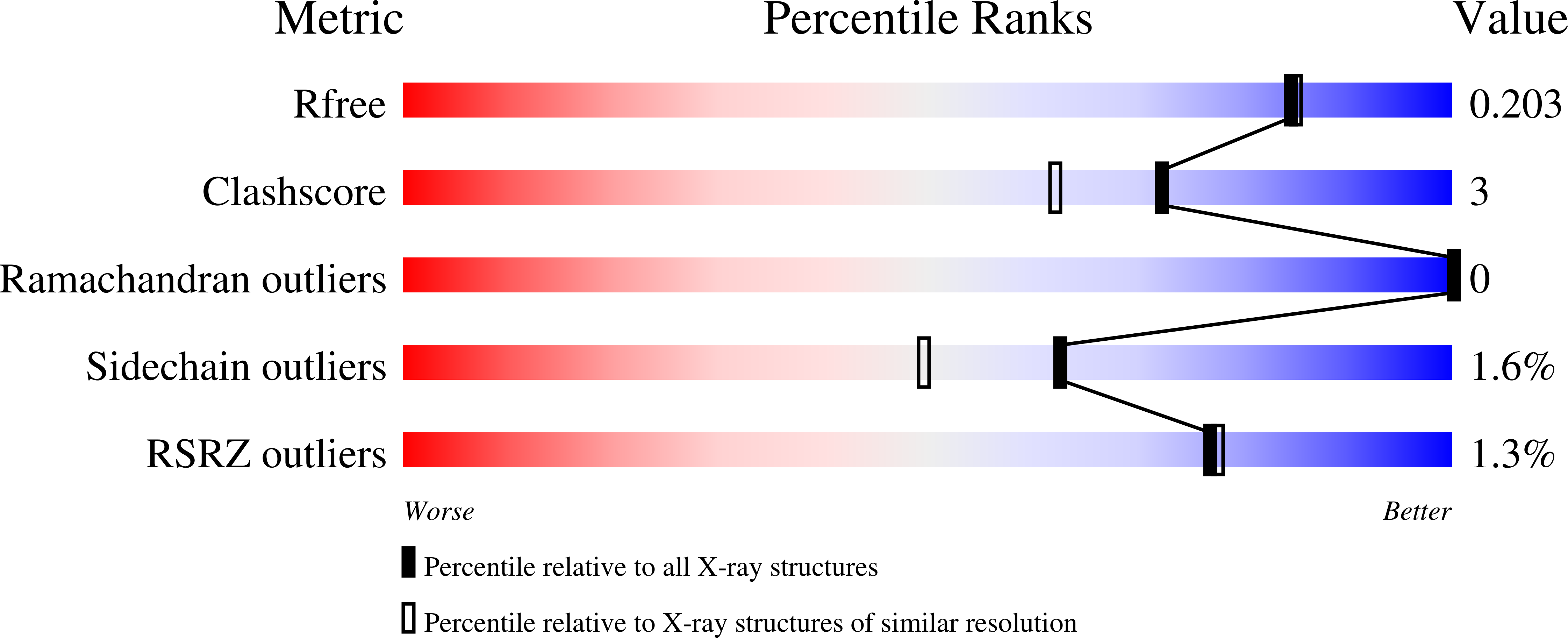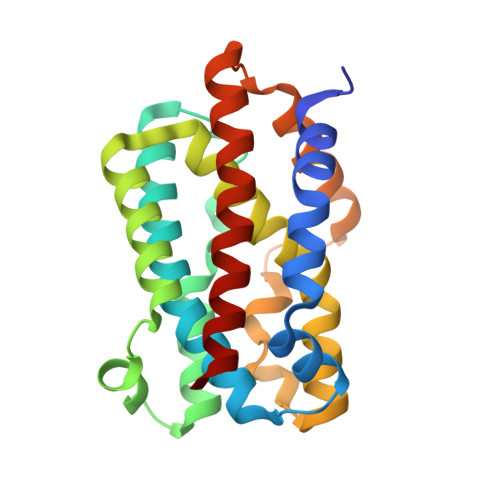Crystal Structure of the Dioxygen-bound Heme Oxygenase from Corynebacterium diphtheriae: IMPLICATIONS FOR HEME OXYGENASE FUNCTION.
Unno, M., Matsui, T., Chu, G.C., Couture, M., Yoshida, T., Rousseau, D.L., Olson, J.S., Ikeda-Saito, M.(2004) J Biol Chem 279: 21055-21061
- PubMed: 14966119
- DOI: https://doi.org/10.1074/jbc.M400491200
- Primary Citation of Related Structures:
1V8X - PubMed Abstract:
HmuO, a heme oxygenase of Corynebacterium diphtheriae, catalyzes degradation of heme using the same mechanism as the mammalian enzyme. The oxy form of HmuO, the precursor of the catalytically active ferric hydroperoxo species, has been characterized by ligand binding kinetics, resonance Raman spectroscopy, and x-ray crystallography. The oxygen association and dissociation rate constants are 5 microm(-1) s(-1) and 0.22 s(-1), respectively, yielding an O(2) affinity of 21 microm(-1), which is approximately 20 times greater than that of mammalian myoglobins. However, the affinity of HmuO for CO is only 3-4-fold greater than that for mammalian myoglobins, implying the presence of strong hydrogen bonding interactions in the distal pocket of HmuO that preferentially favor O(2) binding. Resonance Raman spectra show that the Fe-O(2) vibrations are tightly coupled to porphyrin vibrations, indicating the highly bent Fe-O-O geometry that is characteristic of the oxy forms of heme oxygenases. In the crystal structure of the oxy form the Fe-O-O angle is 110 degrees, the O-O bond is pointed toward the heme alpha-meso-carbon by direct steric interactions with Gly-135 and Gly-139, and hydrogen bonds occur between the bound O(2) and the amide nitrogen of Gly-139 and a distal pocket water molecule, which is a part of an extended hydrogen bonding network that provides the solvent protons required for oxygen activation. In addition, the O-O bond is orthogonal to the plane of the proximal imidazole side chain, which facilitates hydroxylation of the porphyrin alpha-meso-carbon by preventing premature O-O bond cleavage.
Organizational Affiliation:
Institute of Multidisciplinary Research for Advanced Materials, Tohoku University, Katahira, Aoba, Sendai 980-8577, Japan. [email protected]



















